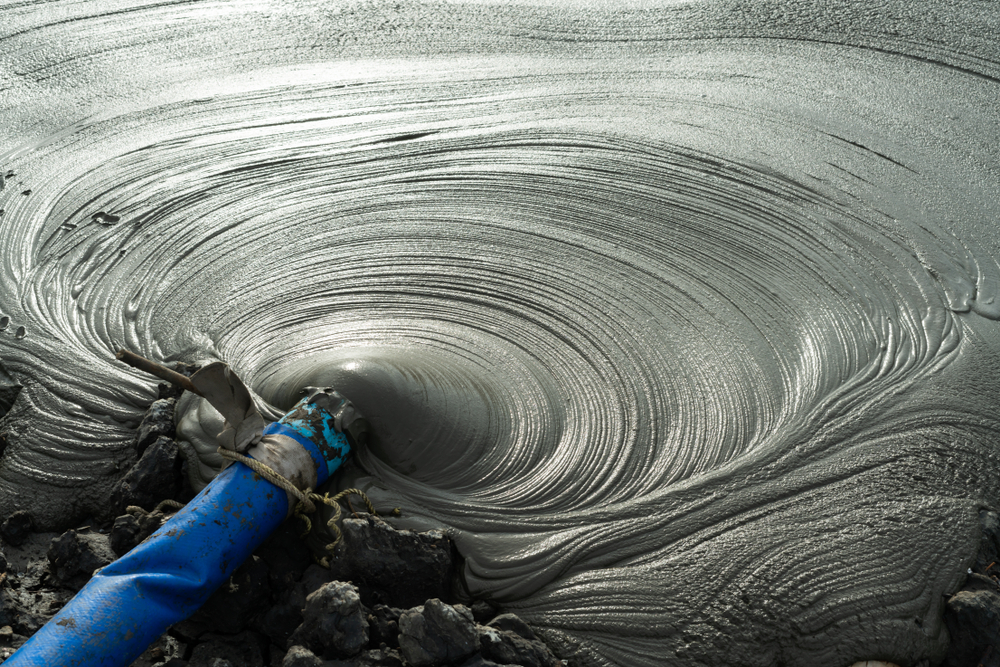Mud Lubricity Test
The Mud Lubricity Test is a critical procedure in the Oil & Gas sector aimed at assessing the lubricating properties of drilling fluids (muds) used during the drilling process. This test ensures that the muds do not only support the structure and stability of the borehole but also facilitate smooth operation of drill bits, cuttings removal, and overall efficiency of drilling operations.
Understanding the lubricity of mud is paramount in optimizing drilling performance and extending the life of drilling equipment. Poor lubrication can lead to increased friction, heat generation, and wear on the drill bit, which in turn reduces drilling speed (ROP) and increases operational costs. The Mud Lubricity Test provides a quantitative measure of these properties under controlled conditions, allowing for informed decision-making during mud formulation and optimization.
The test is conducted according to international standards such as ISO 16342:2019, which specifies the procedure for determining the lubricity of drilling fluids. This standard ensures that the method used is consistent across different laboratories and operators, enhancing reliability and comparability of results.
During the Mud Lubricity Test, various parameters are measured to evaluate the performance of the mud. These include the coefficient of friction, wear rate of the drill bit, and the amount of torque required to rotate the drill bit under controlled conditions. The test typically involves subjecting a specimen of drilling fluid to a standardized set of mechanical stresses that mimic real-world drilling conditions.
The apparatus used in this test includes a specialized rig capable of simulating the drilling environment with a rotating shaft, a sample chamber for the mud, and sensors to measure frictional forces. Specimen preparation involves selecting representative samples of mud according to industry best practices, ensuring consistency across tests. The test is conducted at specific temperatures and pressures relevant to the intended drilling conditions.
The results of the Mud Lubricity Test are crucial for quality managers, compliance officers, R&D engineers, and procurement teams. They provide insights into the effectiveness of different mud formulations in various drilling scenarios, enabling informed decisions on selecting the optimal mud type and composition for specific projects. This ensures that operational efficiency is maximized while minimizing environmental impact.
Scope and Methodology
| Parameter | Description |
|---|---|
| Test Sample | Representative sample of mud according to industry standards. |
| Temperature and Pressure | Controlled conditions simulating real drilling environment. |
| Rotational Speed | Standardized speed for consistent testing across samples. |
| Measurement Tools | Sensors to measure friction, torque, wear rate. |
| Data Collection | Automated data collection and analysis software. |
The methodology for the Mud Lubricity Test adheres strictly to international standards such as ISO 16342:2019. This ensures that all testing is conducted in a standardized manner, providing accurate and reliable results. The process involves preparing representative samples of drilling mud under controlled conditions, subjecting them to mechanical stresses, and measuring the resulting frictional forces. These forces are then analyzed to determine the lubricity of the mud.
The test parameters are carefully selected to ensure that they accurately reflect real-world drilling scenarios. This includes testing at various temperatures and pressures relevant to different drilling environments. The results provide a comprehensive understanding of how the mud will perform under these conditions, allowing for informed decision-making in mud formulation and optimization.
Eurolab Advantages
At Eurolab, our Mud Lubricity Test service offers several advantages that set us apart from competitors. Our state-of-the-art facilities ensure precise and accurate testing conditions, crucial for obtaining reliable results. Our team of expert engineers and technicians is trained to the highest standards, ensuring consistent and reproducible test outcomes.
We provide a wide range of services beyond just testing, including consultancy on mud formulations tailored to specific drilling needs. Our advanced equipment allows us to simulate various drilling environments with precision, making our tests highly representative of real-world scenarios. This comprehensive approach ensures that our clients receive not only accurate test results but also actionable insights into optimizing their drilling operations.
Our commitment to quality is reflected in our adherence to international standards and our participation in ongoing research and development initiatives within the oil and gas sector. We pride ourselves on maintaining the highest ethical and technical standards, providing a reliable service that contributes significantly to the success of our clients' projects.
Use Cases and Application Examples
- Evaluation of new mud formulations for drilling operations.
- Determining optimal mud parameters for specific drilling environments.
- Monitoring changes in mud properties during extended drilling campaigns.
- Selecting the most effective mud type for difficult formations.
- Comparative analysis between different mud types to identify the best performer.
The Mud Lubricity Test is widely used across various applications in the oil and gas sector. For instance, it helps in evaluating new mud formulations by providing insights into their performance under controlled conditions. This allows operators to make informed decisions about which mud type is most suitable for specific drilling scenarios. Additionally, it aids in optimizing mud parameters for different environments, ensuring that the chosen mud maximizes operational efficiency while minimizing environmental impact.
During extended drilling campaigns, the test can be used to monitor changes in mud properties over time, helping operators identify any potential issues early on. This proactive approach ensures that corrective measures can be taken promptly, preventing costly downtime and equipment failures. The comparative analysis between different mud types is another valuable application, allowing for the identification of the best performer based on specific criteria such as lubricity, wear rate, and torque.





